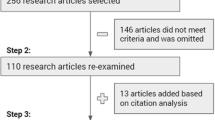Abstract
Nowadays sustainable design is a mandatory requirement in the product development process. For this reason, design methodologies are addressed to establish a close relationship between environmental, social and economic impact indicators and product features from early design stages, especially in those features related to its manufacturing. In this paper, the design for manufacturing and assembly—DFMA methodology is adapted to sheet metal enclosure devices, integrating functional and component relationships to minimize particular sustainability indicators such as energy consumption, carbon footprint, number of parts, required amount of material, assembly time and manufacturing costs. Savings with the proposed method are achieved following specific sub-tasks oriented to define new simplified product components, considering changes in manufacturing processes and re-defining mechanical connections between parts. Traditional DFMA approaches consider manufacturing and assembly issues related to a reduction of product complexity and economic savings. The proposed method aims to examine the benefits in life cycle stages such as raw material consumption, service, maintenance, upgrading and end of life—EOL. The methodology is validated through a redesign of a sheet metal industrial clock, in which the sustainability impacts are calculated from a comparison of an existent product vs. a new product development. The implementation of the method in the case study demonstrate reductions of more than 25% in product mass, consumed energy and CO2 footprint, and more than 50% in theoretical assembly time and product complexity. Sustainability indicators of the proposed method are selected from literature analysis and taking into account attributes of sheet metal enclosure devices.







Similar content being viewed by others
References
Alting L, Legarth J (1995) Life cycle engineering and design. CIRP Ann Manuf Technol 44(2):569–580
Ashby MF (2005) Materials selection in mechanical design. Pergamon Press, Oxford
Bayoumi A (2000) Design for manufacture and assembly (DFMA): concepts, benefits and applications. Cairo University international MDP conference; Current advances in mechanical design and production, vol 7. Pergamon, Amsterdam, pp 501–510
Boothroyd G, Dewhurst P, Knight W (2002) Product design for manufacture and assembly, 2nd edn. Marcel Dekker Inc., New York
Borchardt M, Wendt MH, Pereira GM, Sellitto MA (2017) Redesign of a component based on ecodesign practices: environmental impact and cost reduction achievements. J Clean Prod 19:49–57
CEC (2003) Integrated product policy-building on environmental life cycle thinking. Commission of the European Communities, Brussels
Chiu M, Chu C-H (2012) Review of sustainable product design from life cycle perspectives. Int J Precis Eng Manuf 13(7):1259–1272
Cimren E, Bassi A, Fiskel J (2010) T21-Ohio, a system dynamics approach to policy assessment for sustainable development: a waste to profit case study. Sustainability 2:2814–2832
Eastwood MD, Haapala KR (2015) A unit process model based methodology to assist product sustainability assesment during design for manufacturing. J Clean Prod 108:54–64
Fiskel J, McDaniel J, Spitzley D (1998) Measuring product sustainability. J Sustain Prod Des 6:7–19
Hatcher GD, Ijomah WL, Windmill JC (2001) Design for remanufacture: a literature review and future research needs. J Clean Prod 19:2004–20014
Hatcher GD, Ijomah WL, Windmill JC (2014) A network model to assit ‘design for remanufacture’ integration into the design process. J Clean Prod 64:244–253
Hauschild M, Wenzel H, Alting L (1999) Life cycle design—a route to the sustainable culture? Annals CIRP 48(1):393–396
Herva M, Franco A, Carrasco EF, Roca E (2011) Review of corporate environmental indicators. J Clean Prod 19:1687–1699
Issa II, Pigosso DC, McAloone TC, Rozenfeld H (2015) Leading product-related environmental performance indicators: a selection guide and database. J Clean Prod 108:321–330
Kremer GE et al (2016) Directions for instilling economic and environmental sustainability across product supply chains. J Clean Prod 112:2066–2078
Kulatunga AK, Karunatilake N, Weerasinghe N, Ihalawatta RK (2015) Sustainable manufacturing based decision support model for product design and development process. Proc CIRP 26:87–92
New Zealand Government (2015) EECA BUSINESS. Putting energy to work [En línea]. https://www.eecabusiness.govt.nz/tools/wood-energy-calculators/co2-emission-calculator/. Accessed 16 Apr 2016
Pigosso DC et al (2010) Ecodesign methods focused on remanufacturing. J Clean Prod 18:21–31
Pinzón R, Lascano S, Maury-Ramirez H (2012) Chapter 53: design for manufacturing and assembly and CAE tools—the case of a rice husker. In: DAAAM international scientific book. DAAAM International, Vienna. ISBN 978-3-901509-86-5. ISSN 1726-9687
Ramani K et al (2010) Integrated sustainable lifecycle design: a review. J Mech Des 136:091004–1–091004-15
Riba C (2002) Diseño Concurrente. Ediciones UPC, Barcelona
Sinclair M, Siemieniuch C, Henshaw M (2015) Job design for manufacturing in an era of sustainability. In: Sharples S, Shorrock S, Waterson P (eds) Contemporary Ergonomics and Human Factors 2015: Proceedings of the International Conference on Ergonomics & Human Factors. Taylor and Francis, Daventry, pp 338–345
Suresh P, Ramabalan S, Natarajan U (2015) Integration of DFE and DFMA for the sustainable development of an automotive component. Int J Sustain Eng. doi:10.1080/19397038.2015.1096313
Tischner U et al (2000) How to do eco-design?—a guide for environmentally and economically sound design. Verlag, Frankfurt
Ulrich KT, Eppinger SD (2002) Product design and development. McGraw-Hill, New York
UPME. Direction of Electric Energy (2015) Monthly report generation variables and the Colombian electricity market—January 2015. Mining and Energy Planning Unit, Bogotá
Wimmer W, Zust R (2002) Ecodesign pilot product investigation, learning and optimization tool for sustainable product development. Klulwer Academic Publishers, Dordrecht
Acknowledgements
This research has been developed with the support from Cámara de Comercio de Barranquilla (CCB), DST Ltd. http://www.onlinedst.com/and Universidad del Norte within the project: “Conceptual Design of a platform focused on the development of high-value electronic products” (Contract No. UN-OJ-2012-15799). Acknowledges to COLCIENCIAS and the Ph.D. National Scholarship No 617 2013 contract No UN-OJ 2014-24072).
Author information
Authors and Affiliations
Corresponding author
Rights and permissions
About this article
Cite this article
Mesa, J., Maury, H., Arrieta, R. et al. A novel approach to include sustainability concepts in classical DFMA methodology for sheet metal enclosure devices. Res Eng Design 29, 227–244 (2018). https://doi.org/10.1007/s00163-017-0265-4
Received:
Revised:
Accepted:
Published:
Issue Date:
DOI: https://doi.org/10.1007/s00163-017-0265-4




